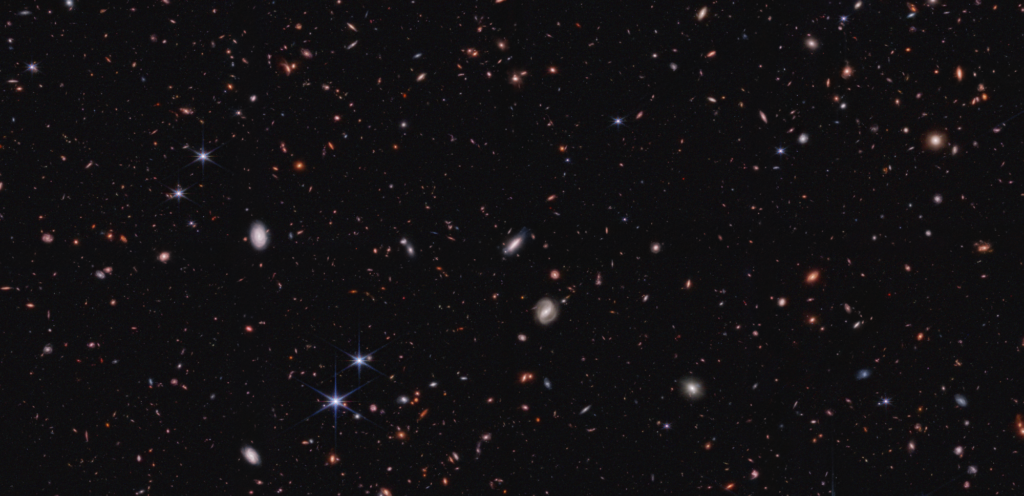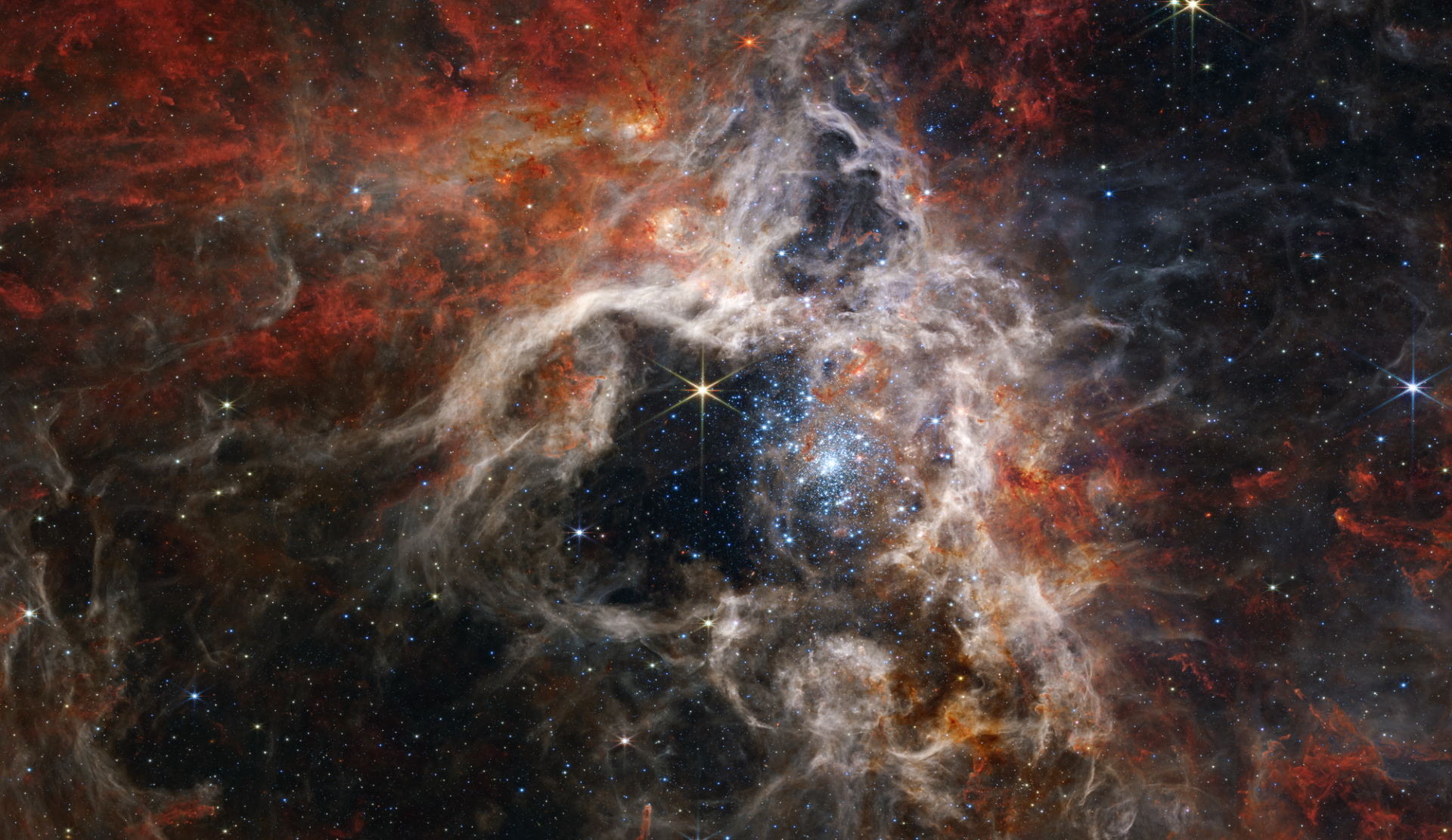A team of researchers from the University of Texas has announced that they have overcome a potential cosmological crisis related to overly massive galaxies in the early Universe. According to scientists, it’s all about black holes.
Cosmological crisis
When astronomers obtained the first images of galaxies in the early Universe taken by the James Webb Telescope (JWST), they got an unexpected result. Instead of modestly sized galaxies, they found real giants. Some of the galaxies turned out to be so massive and rapidly growing that it directly contradicted the standard cosmological model. Because of this, some researchers have even suggested that the theory may be wrong.

However, another scientific team has put forward its own explanation for this anomaly. According to a new study published in the Astronomical Journal, some of these early galaxies are actually much less massive than they look. It’s all about black holes, which makes them seem much brighter and bigger than they really are.
According to scientists, galaxies that seem abnormally massive are probably containing black holes that are very active in absorbing gas. This process is accompanied by the production of large amounts of radiation, making galaxies seem much brighter than if their light came from stars alone. This gives the impression that they contain a large number of stars and therefore have a large mass. When scientists removed these galaxies, nicknamed “little red dots” (because of their red color and small size), from the analysis, the remaining early galaxies fit the predictions of the standard model.
More efficient star factories
However, although the scientists managed to solve the main problem, they still have another unresolved issue. The JWST data on the early Universe still contains about twice as many massive galaxies as expected under the assumptions of the standard model. One possible reason for the contradiction may be that stars formed faster in the early Universe than they do today.

Star formation occurs when hot gas cools enough to condense into one or more stars under the influence of gravity. But as the gas shrinks, it heats up, creating external pressure. In our region of the Universe, the balance of these opposite forces causes the star formation process to be very slow. But since the early Universe was denser than the modern Universe, it may have been harder for gas to be blown out during star formation in those days, allowing the process to go faster.
In parallel, astronomers analyzed the spectra of “small red dots” detected with JWST and found evidence of fast-moving hydrogen gas, a characteristic of black hole accretion disks. This supports the idea that at least some of the light from these compact red objects actually comes from gas orbiting black holes rather than stars. Which means they’re not as massive as astronomers originally thought. Further observations will have to help scientists find an answer to the question of how much light actually comes from stars and how much from the gas around black holes.
Earlier we told you about how James Webb helped scientists overcome another cosmological problem.
According to NASA


